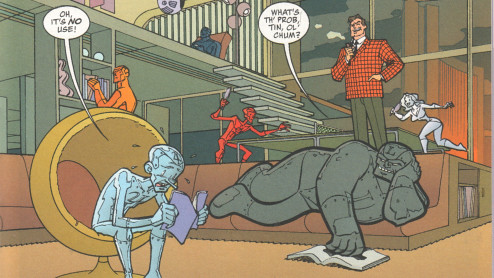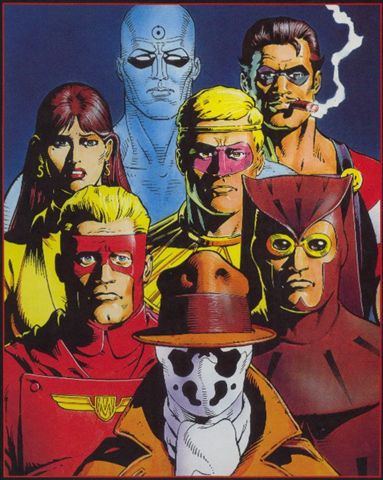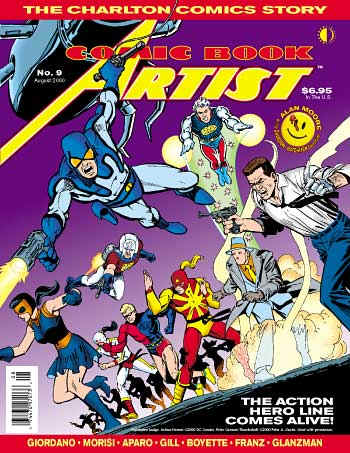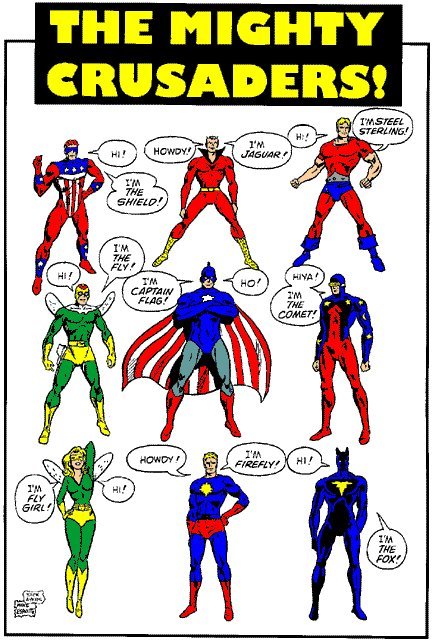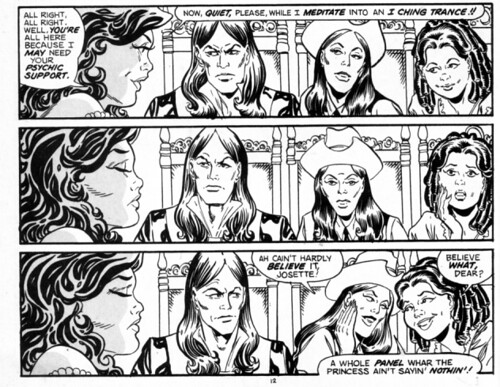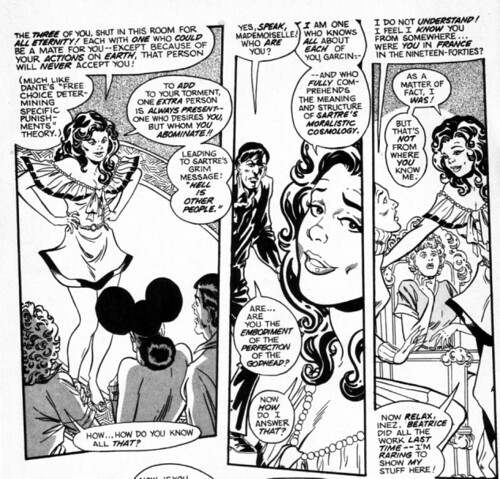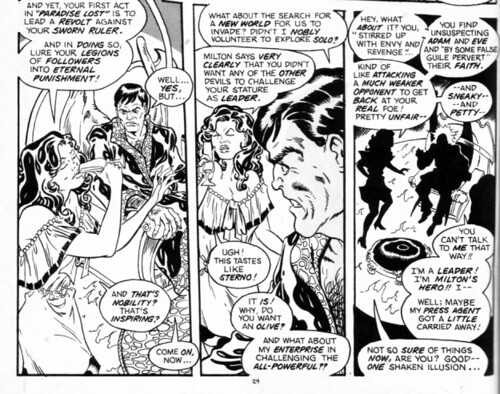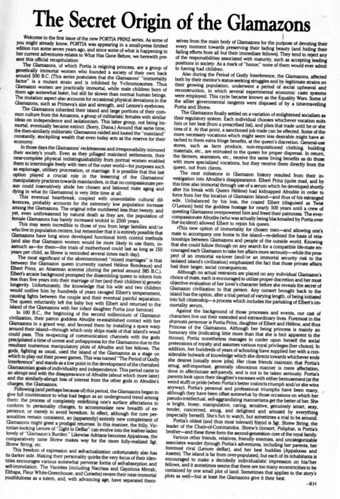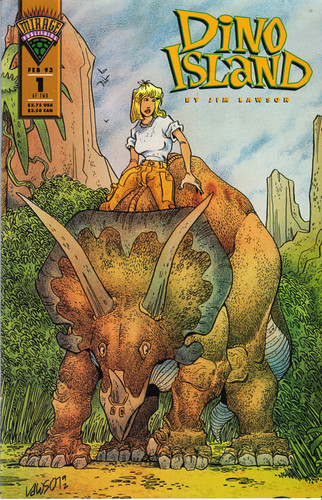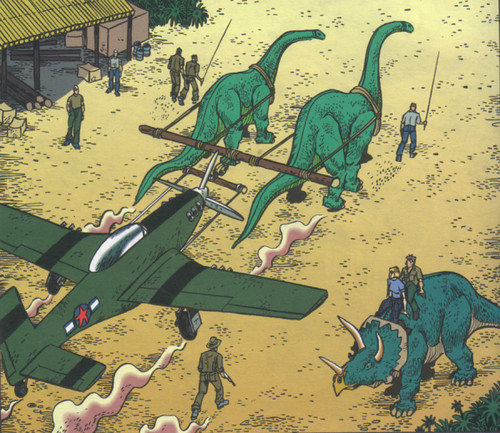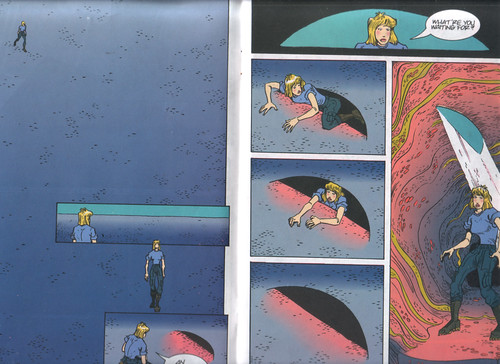The prize of the pile was a still-in-the-plastic Captain Glory #1, complete with its SuperDeluxe KirbyChrome Trading Card!

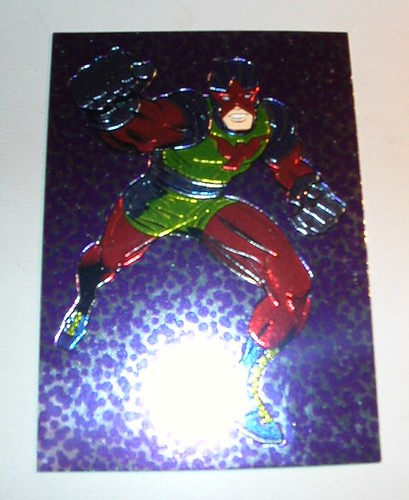
Of course, I had to rip it open to take that picture of the card - Oh noes! I must have devalued it from the $.25 NM-VG sticker price!
Heh.
Anyway, there was some goodness inside, too. This Kirby-created saga, as senses-shattering as it was, was not so complex that it couldn't be described in a fairly simple flow chart on the inside front cover:
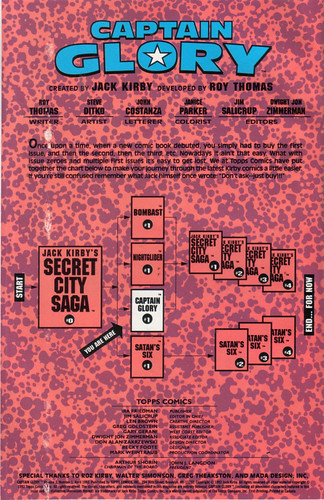
I'd like to see them do that with IC or Civil War, eh?
But the best bit of all was the surprise (to me, anyway) that all the interior art was done by Steve Ditko! Now this is clearly some of Ditko's later work, and shows his growing disenchantment with the field -- many of the backgrounds are minimal or nonexistent, and some pages have a rushed feel -- but there was no way that his enormous talent could be completely disengaged:
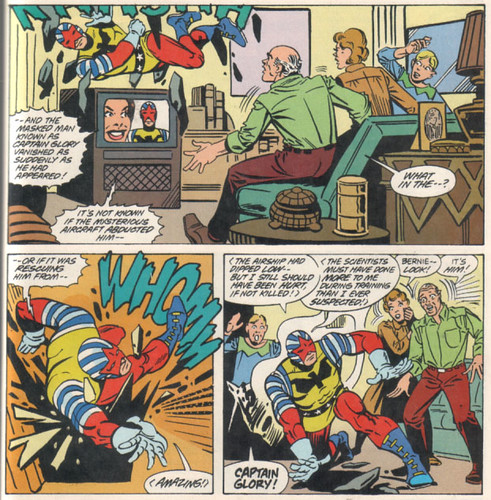
Among the rest of the stack was a four-issue miniseries by John Byrne, The World of Metropolis:

This mini, a companion to Byrne's Man of Steel reboot, is significant only in the sheer number of back-up characters that I am sure have since been completely retconned out of existence: Perry White's criminal friend, Ling; grad student Clark Kent's waitress girlfriend, Ruby; and Jimmy Olsen's suicidal girlfriend, Chrissie, just to name a few.
Other than that, the whole thing seems lame and ill-conceived. Byrne's writing is pedestrian; the art looks like Win Mortimer, Dick Giordano, and Sal Trapani collaborated on it while riding the LIRR into the city each morning from Suffolk County; and even the episode sequence makes no intuitive sense: Perry White - Lois Lane - Clark Kent - Jimmy Olsen.
One sequence is noteworthy: here's Lex Luthor dismissing a pre-Planet Lois, whom he had discovered spying in his headquarters:
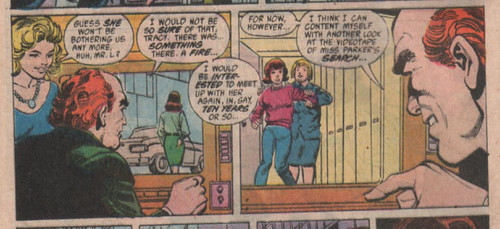
So, what's with Byrne and the villains-watching-videos-of-the-heroine-naked-for-jollies bit? Didn't he use that in the She-Hulk GN, too? And to make it even creepier, the story makes very clear that Lois is fifteen years old at the time of this strip-search! Ewww.
My haul also included issue #2 of DC's 1988 relaunch of Flash Gordon; it was dated and mediocre, except for this bit:
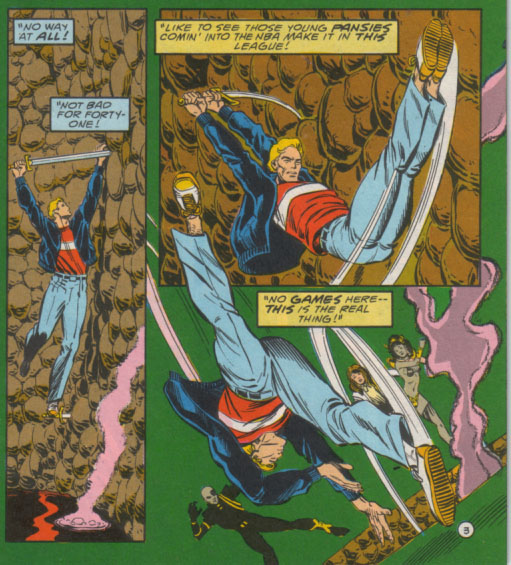
Forty-one?! Is there a non-rejuvenated mainstream hero who's that old in continuity? Bravo, Dan Jurgens!
I also got the first part of the Busiek-Perez JLAvengers: the art was pretty, it was cool to see the Marvel and DC guys together with high production values, and I liked the artifacts of power shtick, but there was nothing here to convince me to buy the $75 version. Maybe if a TPB comes out. Or I can find the other parts for thirty cents each, too.
The rest of the stuff isn't worth mentioning, but I guess I got my money's worth.
So, R.I.P., Bigfoot's Comics and Cards; bon chance, Mr. Bigfoot (he seemed a nice guy).
